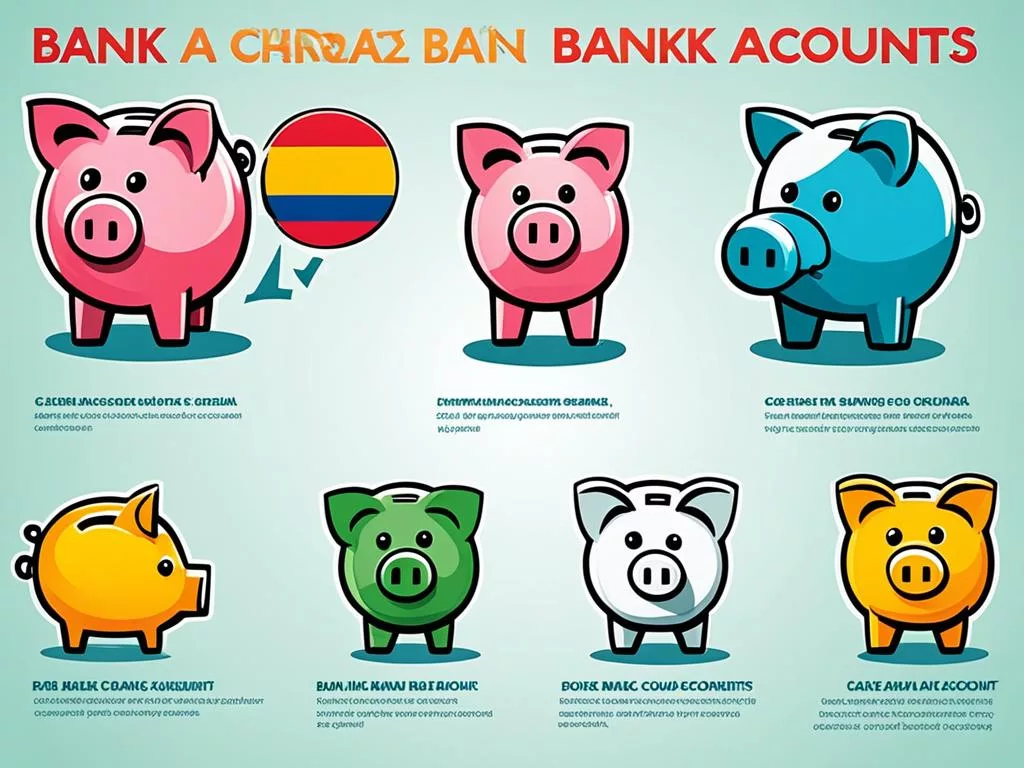I started my journey to find easy banking in Spain as an expat. Spain has more banks than anywhere else in Europe1. But I learned that you might pay about 8 EUR (9 USD) a month for an account1. The yearly cost can change a lot. For instance, Deutsche Bank might charge 80 EUR (90 USD)1, but Banco Mediolanum is cheaper at 6 EUR (7 USD) a year1. For foreigners like me, knowing this helps pick the best bank in Spain.
The tax system here is as complex as Barcelona’s narrow lanes. The general VAT rate is a high 21% but can drop to 4% for some things1. Understanding these tax rates and the income tax, which ranges from 19% to 45%1, helps with financial planning. It also helps know the costs of living or running a business here as a non-resident, who pays taxes only on money made in Spain1. This matters a lot when opening a bank account as a non-resident.
Understanding the Types of Bank Accounts in Spain
In Spain, banks like Banco Santander and BBVA offer many choices for both locals and visitors. You can find accounts for everyday use or for saving, called Cuenta corriente and Cuenta nomina2. If you’re in Spain for less than six months, a non-resident account lets you buy property or invest. But you’ll need a special non-resident certificate and might pay more fees3. Resident accounts, however, have lower fees and tax benefits but require a Spanish ID number (NIE) and proof of where you live34.
Looking to save? Banks like ING Direct offer accounts with high interest. And Banco Sabadell has options for both saving and investing, with fewer fees and easier access24. Digital banks are also big in Spain, with BBVA giving free accounts and others like N26 and Revolut offering great online services24.
Opening a bank account in Spain means you need to show ID, where you live, and other papers, especially for US citizens2. Banks here help businesses big and small with loans and insurance. They also have special accounts for kids, which parents can manage4.
To avoid high fees when opening a non-resident account or doing other banking tasks, look into payment specialists. They can help with ATM withdrawals and sending money abroad, getting you the best rates3.
Spain has a strong banking scene with lots of choices, from traditional banks to new online platforms. Each offers different services and benefits. Picking the right one can make your financial life in Spain much easier.

Guide to Opening a Bank Account in Spain as a Foreigner
When moving to Spain, bring vital documents for setting up a bank account. This includes a valid passport, proof of where you live, and maybe work records. If you’re not living there yet, you’ll need a “non-resident certificate.” This takes about 10 days to get and costs around 15€5. Picking the right bank is crucial. Think about fees and how fast they can set up your account. Normally, it takes 1 to 5 days to activate an account54.
Spain’s banking scene offers everything from big banks like BBVA and Santander to new online options like N2656. Online banks often bring ease and support in many languages6. Yet, traditional banks have custom deals that might be just right for you. These include better options for sending money abroad6. Whichever you choose, perks like online banking, support in various languages, and advanced tools make Spanish banks attractive6.
For those coming to Spain, think about why you’re here. This could be for study, work, business, or the expat life. Your reason can help you choose the right type of bank account6. While the process might vary, Spain is keen to welcome you into its banking system. This shows in the variety of banking options available564.
Source Links
- https://www.internations.org/spain-expats/guide/banks-taxes
- https://www.globalcitizensolutions.com/banks-in-spain/
- https://www.moneycorp.com/en-gb/news-hub/how-to-open-a-bank-account-in-spain/
- https://www.expatica.com/es/finance/banking/spanish-bank-account-103392/
- https://www.immigrationspain.es/en/open-bank-account/
- https://www.deel.com/blog/opening-bank-account-in-spain

